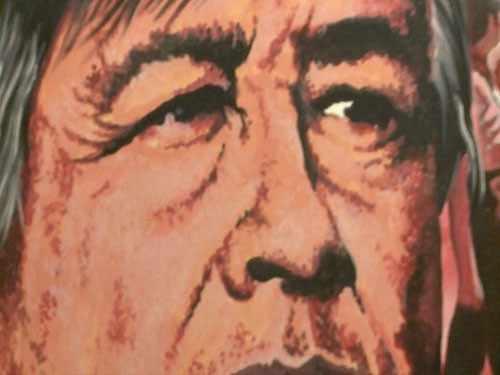Cronkite News has moved to a new home at cronkitenews.azpbs.org. Use this site to search archives from 2011 to May 2015. You can search the new site for current stories.
Park Service recommends Phoenix site as part of park honoring César Chávez
PHOENIX – A National Park Service recommendation could bring federal designation to the building near downtown where farm labor leader César Chávez is said to have first uttered “Sí se puede.”
The Santa Rita Center is among five sites connected with Chávez’s life that the agency wants to turn into a national historic park. The recommendation went Thursday to Congress, which passed legislation in 2008 to review more than 100 sites connected to Chávez and his movement.
“We’re excited because the center really deserves to be in there,” said David Adame, chief operating officer of Chicanos por la Causa, which purchased the center in 2004. “It’s a national treasure that we want to make sure that we can partner with other folks to highlight.”
In 1972, Chávez chose the Santa Rita Center as headquarters for a 24-day fast, which he staged in protest of an Arizona law limiting the rights of farm workers. The fast’s ultimate goal was recalling then-Gov. Jack Williams.
It was during that fast that Chávez is said to have uttered “Sí se puede,” which became the motto for the United Farm Workers.
Chávez chose the center because it was located in his native state – he was born in Yuma – and in the middle of an area where many farmers lived at the time, said Marc Grossman, spokesman for the César Chávez Foundation and Chávez’s longtime personal aide.
Chávez spent almost all 24 days at the center before being hospitalized near the end, he said.
“César’s fast was the catalyst for heightened political awareness throughout Arizona,” Grossman said. “This was a movement that directly impacted the lives of millions of people.”
Spreading the national historic park across five locations – the others are in California – is fitting because “the lens and scope of César’s labors are very broad,” Grossman said.
“Out of 100-odd options, they had to select five of them,” he added.
Five other sites in Arizona where Chávez lived and worked could be designated as National Historic Landmarks or included in the National Register of Historic Places, according to the Park Service.
In Yuma, those sites include the remains of the homestead where Chávez grew up, the general store his father ran and the Laguna School building where he attended school throughout childhood. The other two locations are the United Farm Workers field office and the home where Chávez died in his sleep in 1993, both in San Luis.
In 2007, the Santa Rita Center was listed on the Phoenix Historic Property Register.
The idea of a national historic park in Chávez’s honor was based on the farm movement he founded that improved the lives of millions of Latino farm workers, said Mike Litterst, a spokesman with the National Park Service. The creation of a national historic park would enable protection for the largest number of significant locations, he said.
The César E. Chávez National Monument, a Keene, Calif., site where Chávez lived and led the farm workers movement, would serve as the park’s cornerstone, the Park Service said.
If Congress approves the national designation, the Santa Rita Center would be managed between the Park Service and Chicanos por la Causa, the agency said.
Adame, with Chicanos por la Causa, said his organization would appreciate the financial and communal benefits the recognition would bring. The group opens the center every once in a while for special community events and programs, he said.
“It definitely needs significant work,” Adame said. “It’s hard to financially maintain. Our strategy would be to incorporate it into a mixed-use development.”
Litterst, with the Park Service, said designating the center as a national park would draw more tourists.
“It brings some prestige to that area with the recognition of national significance,” he said.
Alfredo Gutierrez, former minority and majority leader in the Arizona State Senate, said that the center’s current recognition disappeared along with the vibrant Latino community that surrounded it. He said he believes that could change with the potential designation.
“The sad part is that no one who visits there now would be able to understand the importance of (Chávez) being there,” Gutierrez said. “As far as people coming there to understand César’s story, I think (the recognition) is going to do that.”
Grossman, who knew Chávez during the last 24 years of his life, said Chávez wouldn’t have allowed this type of recognition if he was still alive.
“It’s happening because he’s not around to upset,” Grossman said. “I think it’s a reflection that his legacy and values are as relevant today as they were in 1972 during the fast at the Santa Rita Center.”










